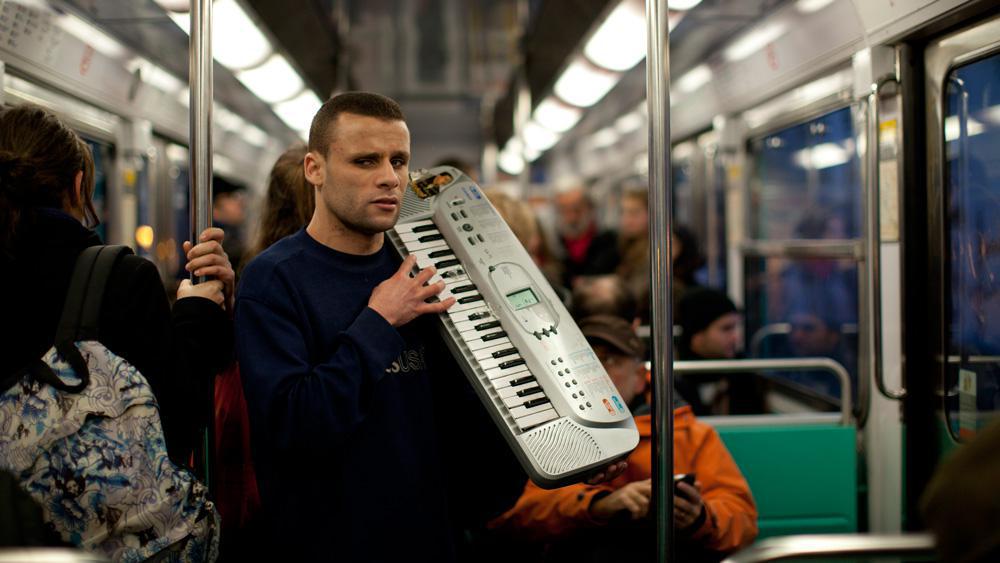Citizens Band became my summer pied-à-terre. I could literally have lived in that installation by Australian-born, Paris-based artist Angelica Mesiti, exhibited at the Musée d’art contemporain in her first solo on North American soil. Mesiti’s four screens face each other in a square. Each screen, one after the other, shows an approximately 5-minute video of a musician performing a piece. The choice of the performers is key: each one is a musician living far away from the country of their birth, and their craft keeps them tied to their homeland.
Asim Gorashi is a taxi driver and music scholar in Brisbane who is one of the great whistlers of Sudan, where the dearth of instruments has sprouted a rich whistling tradition. Originally from Mongolia, Bukhchuluun Ganburged performed as throat singer—accompanied by his traditional morin khuur fiddle—on the streets of Sydney to get by upon his arrival in Australia. The Algerian Mohammed Lamourie sings the songs of his musical hero, assassinated rai musician Cheb Hasni, with the help of his Casio keyboard on the Paris subway. And finally, Géraldine Zongo from Cameroon has brought Akutuk, a traditional technique of water drumming, to her local pool in northern Paris.
All each character does in perform one tune. The videos are minimally edited. (This is also true of Mesiti’s other powerful work, Prepared Piano for Movers (Hausmann), exhibited in the next room, which records the sounds of a piano being moved up the stairs of a seemingly endless walk-up.) Yet Citizens Band is like the hearth in a cold winter house—it emanates warmth. Sit at the centre of those four video screens, and you’ll feel the potential of humanity, the boundlessness of creative talent, the strength of resistance, the immutability of individuality. Big things. Huge emotions, expressed with the simplest of means.
But if I were queen of the world, there’s one part of the work I’d ruthlessly delete. After the four performers have each had their turn, screen by screen, Mesiti adds a video that activates all four screens; a swirling spiral of coloured light spots is accompanied by a soundtrack that mashes up parts of the performances. It’s cacophonous and visually overwhelming, and after what feels like too long, it ends as it began—pointlessly. I’ve wondered, over the weeks, why it’s there, and I think it’s the artist’s mark. It expresses a moment of doubt in Mesiti as to whether simply showcasing four talented characters in an artistic setting is sufficient as an authorial gesture. I wish she had felt, as I do, that yes, it is more than enough.









